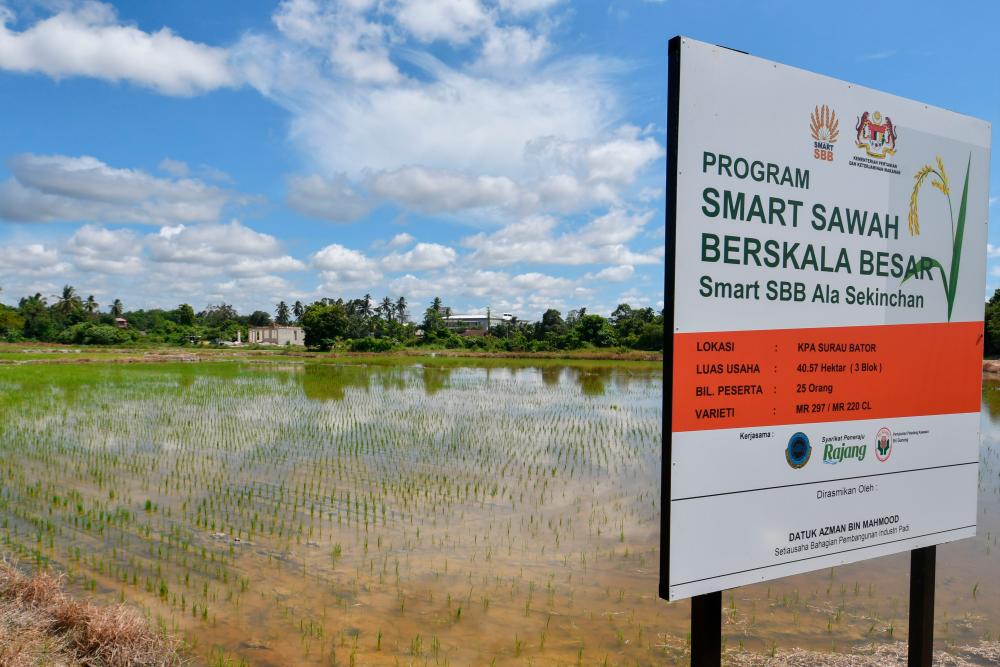KUALA LUMPUR: The Ala Sekinchan Large-Scale Smart Paddy Field (SMART SBB) programme is expected to be expanded to all rice-producing areas nationwide following the pilot projects’ success in yielding encouraging harvests.
The Ministry of Agriculture and Food Security (MAFS) secretary-general Datuk Lokman Hakim Ali said that the highly successful farming practices that were launched in May 2023 saw one of the pioneer areas of paddy cultivation successfully increase production from seven metric tonnes to 10.45 metric tonnes per hectare.
He said that currently, the pilot projects are being carried out in four states namely Perlis, Kedah, Kelantan and Terengganu involving 17 paddy planting areas.
“If the pilot projects continue to achieve an overall rice yield of at least seven to eight metric tonnes per hectare, we will implement the programme on a large scale.
“This rice yield will not only be sufficient for the country but will also be able to be exported,” he said when appearing as a guest on Bernama TV’s Apa Khabar Malaysia programme today.
He added that the name ‘Ala Sekinchan’ was used after looking at effective management methods and formulas implemented in the area in helping to increase rice production of up to 13 metric tonnes per hectare.
“The management method implemented is very systematic from the use of automation machines, a very effective seed planting method and the use of rice transplanting machine.
“As a result of the consistency of the method practised, the productivity has been good for the Sekinchan paddy farmers for several years,” he said.
He said that the ministry takes the implementation of the programme seriously and various recovery efforts and interventions have been implemented to restore the momentum of the country’s economic growth to ensure a sufficient supply of food at all times.
Touching on the country’s agriculture direction, Lokman Hakim said the ministry will ensure that all the agendas planned will be implemented and priority will be on the food security sector including grain corn, aquaculture and animal husbandry through feedlots.
“We are also prioritising the involvement of youths in agriculture to rejuvenate the sector, thereby ensuring that the institutions under the ministry will provide guidance to the next generation involved in agriculture,” he said. - Bernama









